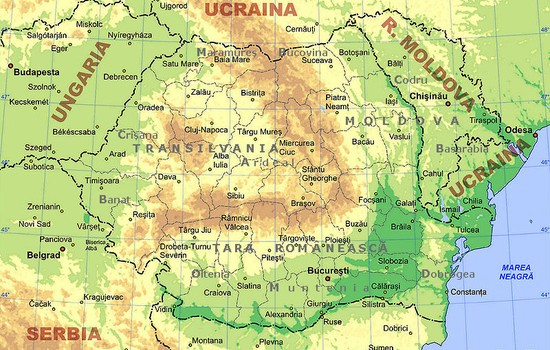Overview

Overview
Romania's rich cultural scene offers everybody an exquisite experience bringing together well preserved traditions from over the centuries along with its fabulous architectural richness, an incredible topography and many famous names that have gained international recognition in fine arts, sport, science, medicine or liberal arts.
The uniqueness of the country is also the fact that it is the only country in Eastern Europe that speaks a Romance language. Besides this, especially in Transylvania, there are two other large minority groups (Hungarians and Germans) who enrich the linguistic color and diversity here.
The breathtaking landscapes make Romania a wonderful travel destination with a wide variety of Medieval Castles that can be visited whilst staying at luxury resorts, attending a music or medieval festival and enjoying delicious dishes and wine.
The Carpathian Mountains cover about one-third of the country; they surround the Transylvanian Plateau and divide it from the other two main regions: Moldavia in the northeast and Walachia in the south. The Transylvanian Alps in the central region contain the highest peak, Mount Moldoveanu (2,544 m ~ 8,346′). The eastern and southern regions are characterized by rolling plains. The Danube River stretches through the country for six hundred miles, forming its southern border with Serbia and Bulgaria and emptying into the Black Sea in the east via the Danube Delta (the second largest river delta in Europe and the best preserved on the continent).
The strategic location of Romania, in the southeastern part of Central Europe, on the western shore of the Black Sea, offers geographic advantages for businesses wishing to gain foothold in Eastern Europe and beyond. Romania’s trade connections stretch out into Central Europe, the Commonwealth of Independent States (CIS), Russia, and the Middle East – collectively representing a market of tens of millions of consumers
Romania’s transport infrastructure is benefiting from a one billion EURO EU investment and includes over 86,000 km motorway, railroads (the fourth largest railroad network in Europe) and sixteen international commercial airports. In 2013 Romania ranked fifth in the world, and according to The Independent, it ranks number one in Europe at Internet speeds, with city of Timișoara ranked among the highest in the world.
In 2017, Romania was confirmed as of the fastest-growing economy in the EU – a status which exceeded financial forecasts, and drew plenty of global investment attention, especially on Tech Industry. Additionally, it is rank as tenth in the world in terms of the diversity of minerals producer and it is a net exporter of electrical energy and is 48th worldwide in terms of consumption of electric energy.
A highly trained workforce, abundant natural resources, geographical advantages that facilitate transportation of goods and one of the largest markets in Central and Eastern Europe make Romania an increasingly attractive destination for investment.
Key facts
Area: 237,500 sq km (about 91,699 sq miles )
Population: about 20 million
Location: Eastern Europe
Borders: Hungary, Serbia, Bulgaria, Moldavia and Ukraine
Capital: Bucharest
Official language: Romanian
Currency: Romanian Leu (RON) https://www.xe.com/currency/ron-romanian-leu
Government type: Semi-presidential Republic
(executive functions are held by both government and the president)
NATO member: 2004
EU member: 2007
Good to know
Power supply: 220 V
Romanian uses the metric system for units of measurements.
Romanian date notation: year/month/day.
Romanian names: family name comes first
Time Zone
Romania is two hours ahead of Greenwich Mean Time (GMT). The country uses the practice of daylight saving time, advancing clocks by one hour during the period from the last weekend in March to the last weekend of October.
More information http://washington.mae.ro/en/romania/310

